How to Go Green at Home
On this page we will look at How to Go Green at Home and the different Green DIY projects that can help you to also save money while saving the planet!
Going green and being environmentally conscious is a hot topic. When you learn how to start going you will see that it can be something as little as recycling or something as big as using solar panels on your house and getting energy from a windmill.
The good thing is there’s no right or wrong way to ‘go green’. It’s about what works best for you and your family.
There are so many ways for you to start saving money while going green by ensuring your home is insulated and that you are frugal in your shopping habits and your use of energy at home.
I have chosen to recycle everything, and even use recycling in the garden. There is also a huge rainwater tank as well as a couple of big trolley bins with pumps that can use rain water or grey water on the garden.
And I made the big comittment of having solar panels fitted for electricity as well. But we all have to start somewhere when it comes to learning how to go green at home and at the office.
On this how go green page you will learn about a wide range of different green living topics that also focus on how can going green save you money.
A Look at the Affordability of Green Energy
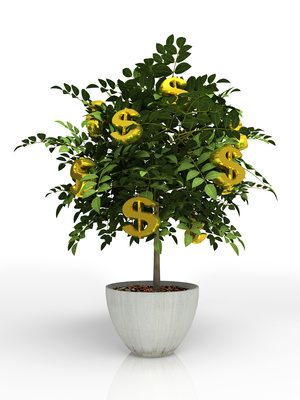
Now we can have a look at how to go green and save money.
The topic of green energy is one that is continuing to gain momentum, and with the theory that fossil fuels will eventually run out, it’s a topic that needs to be discussed.
There are many ways to create green energy, but they aren’t all affordable.
Therefore, it’s important that we explore the challenges and possible solutions for how we can make it affordable in the future – before our time runs out.
Obviously, the cost of green energy is what’s holding us back from committing to it.
The fact is that fossil fuel energy costs three to ten times less than green energy does, when you consider the return on it.
This is why fossil fuels are still favored over other green energy sources – the return.
Another challenge facing green energy is it’s intermittent nature.
For example, solar panels only work when the sun is shining for lengthy periods of time and wind energy only words when the wind is blowing.
For both of these green energy methods to gain support, they need to become more affordable and reliable first.
So, the question is how do we overcome the challenges facing green energy?
The first conclusion is that we have to find a new green technology that can compete with the profits made with fossil fuels and coal.
This isn’t going to happen if green energy has to be subsidized by the government to make a profit.
Fossil fuels and coal don’t have this dilemma because there is so much money to be invested (and made) in it. This has to also be the case for green energy before it will take off.
Vinod Khosla, a green energy venture capitalist, believes that they only way we can get green energy to that level is through experiments.
While hundreds of experiments may fail, it only takes one to succeed. Therefore, Khosla believes we should be conducting more experiments to find the one successful green energy source that will meet the profitability made by fossil fuels.
So, most of us aren’t scientists who can spend out days conducting experiments, but that doesn’t mean there isn’t anything we can do.
You can help get more green energy subsidies by getting involved with the local politics surrounding your community and state.
In addition to helping obtain subsidies, you can purchase energy-efficient items for your homes (light bulbs, energy-efficient windows, roofs, etc.)…even investing in a hybrid car will help the drive for green energy.
Shifting from fossil fuels to green energies won’t happen instantly.
But with the combined and continued efforts of individuals all over the globe, it can be possible.
Types of Green Energy Available to Go Green
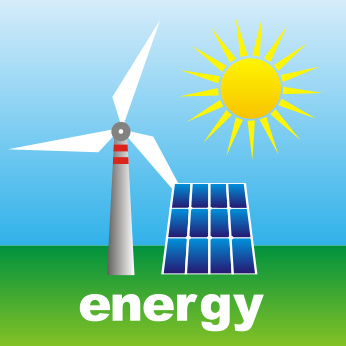
There are many different kinds of green energy available to look at for how to green your home energy supplies.
The most well known one at the moment is solar power, and that is because it is currently the most affordable and easily installed green energy source.
But only a few years ago solar panels were horrendously expensive and there were very few experts available to instal them and to give advice to people wanting to learn how to go green at home with solar power.
But just like with solar power panels, as new alternative energy sources develop further there will be more options available for home owners to consider and to keep adding to their energy sources.
1. Solar Power –
You have most likely heard mention of solar power in green energy discussions.
The two types of solar power that exist are solar power plants and solar power for homes. While solar power appears to be a great solution, there are still problems that need to be worked out.
For example, producing the solar panels needed to generate solar power is a toxic process, which goes against the green initiative (although solar energy is greener than oil is).
Additionally, generating solar power is expensive too and can take up to twenty years before it begins to pay for itself.
2. Hydropower –
Right now, more than 70% of the world’s renewable energy production is being done through hydropower.
Hydropower works through the installation of penstocks underwater.
When strong water currents pass through the penstocks, the “push” associated with the current is turned into electricity and fed to the energy grid.
3. Geothermal –
Geothermal energy is a great green energy source being used by many people around the world, however, the problem is that it isn’t available everywhere.
Geothermal energy is produced by using the heat generated from the earth.
Therefore, in order to get geothermal energy, a centralized underground pocket of high-heat must be found and then tapped into. This heat is then converted into electricity.
4. Wind Energy –
Wind power has been proven to be a great renewable power source.
However, in order for it to work, the generators must be positioned in locations where wind velocity levels are high a great percentage of the time.
Wind energy is preferred over both hydropower and solar energy because it is easier to build and costs less to produce, especially when you take in the substantial return wind energy brings.
The only negative thing is that the wind turbines (energy generators) are very large and blog the view.
5. Biomass –
Biomass is the process of converting by-products, such as manure, wood chips, leftover sugar, etc. into electricity.
These by-products are burned in order to collect the heat energy and convert it into electricity. There are even some products that are produce specifically for this purpose (think about corn ethanol).
Biomass is a great way to create renewable energy as it serves two purposes…creating energy and disposing of leftover products.
However, biomass most likely won’t be one of the primary producers of the world’s green energy needs.
Make Your Home Greener with These Improvements
You may be surprised to learn that you can make your home “greener” without spending a lot of time and money on it.
Here are some simple home improvement projects that you can do to make your home more energy-efficient without breaking the bank.
1. Purchase Automatic Light Switches –
If you have young children, then you’ve probably noticed that lights get left on when they aren’t supposed to.
Automatic light switches are a great solution for this problem, and the best part is that you can have it done and see results instantly!
2. Replace Old Light Bulbs with New Energy-Efficient Bulbs –
One of the best new inventions for today’s world is the new energy-efficient light bulbs.
These bulbs don’t put off nearly as much heat as the old ones do and they don’t use up as many watts as the old ones either. They come in both the white light and the soft “yellow” light colors.
3. Change Your Shower Heads –
You may not have realized that there is also water saving shower heads available now.
These shower heads don’t cost much, but will have a big difference on your water consumption and bill, if you are on city water.
Basically, these shower heads allow more air inside of the water stream so that you use less water, but still feel like you are using just as much.
4. Reinsulate Your Home –
If your house is drafty and your heater/AC unit is constantly running, then you may need to re-insulate your home.
While this will require a larger investment upfront, it will save you a ton of money in a short amount of time.
There are several different types of insulation available, so make sure you do your homework and choose the one that best suits your needs, wants and budget.
5. Choose Green Products –
There are many areas in your household that you can make greener, especially with all of the new green products available.
For example, you can purchase green dishwashing soap (or make your own) instead of the regular commercial detergents many produce. There are also organic soaps available in Whole Foods stores too.
As you shop for various products, begin to read the labels and look for the products that are recyclable…then recycle them once you’re finished with them!
Additionally, you can purchase reusable shopping bags instead of using the plastic bags provided at stores.
Those are just a few examples of how you can go greener through the products you use.
There are many other instances when greener options are available.
So, keep your mind open to new green methods when they present themselves
Tips for Helping the Environment by Reducing Household Waste
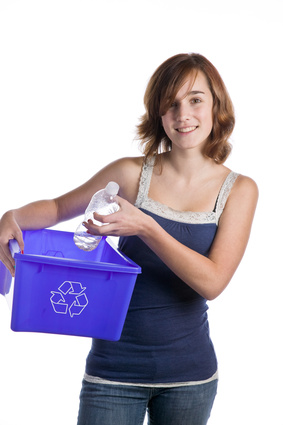
While you may not be in the position to install and energy-efficient roof, solar panels, a new door or new windows, you can do something to help the environment by reducing the amount of household waste that you and your family produces.
1. Start Composting.
Composting foods such as orange peels, carrot peels, potato peelings, etc. can help you reduce your solid waste by as much as 25 percent!
There are lots of ways to compost and all have their own instructions, but you can keep it very simple!
All you have to do is put all of your compostable foods into a container on the kitchen bench and every time it fills up, just dump the contents into the dirt.
The soil will benefit from the nutrients as the food breaks down within it.
2. Use Reusable Shopping Bags and Drinking Cups.
Too many people go shopping and walk out with plastic shopping bags only to go home and throw them away.
There really isn’t a need for this as there are plenty of reusable shopping bags available now for a small cost (many of these are decorative too).
Likewise, if you go out for coffee every morning, purchase your own thermal coffee cup and use it instead of the disposable cups the coffee shops provide.
3. Look for Recyclable Products.
When shopping, check the products to see if they are available in recyclable models.
If so, then purchase the recyclable items and recycle them when you are finished with them!
4. Pass Unwanted Items On.
Many of us are guilty of going through our household items during spring cleaning (or any other time of the year) and tossing out the items we no longer use.
If you have something that you don’t want any longer, but is still in usable condition, donate them to charity or sell them in a garage sale or on eBay so they don’t go in the trash and can be enjoyed in someone else’s home.
5. Purchase Whole Foods.
One of the biggest producers of household waste are the packages our food products come in.
You can get away from some of this if you begin to purchase whole foods.
For example, if you purchase canned pears, simply make the switch to fresh pears.
You can do the same with other pre-packaged foods such as meat, frozen dinners, etc.
Also, if you have a bread machine – make your own bread. It’s healthier and you won’t have an unwanted plastic bag leftover either!
6. Purchase Bigger Amounts.
When possible, choose products that are available in larger quantities. An example of this is laundry detergent.
Sure, you can purchase the smaller (cheaper) bottle/box, but if you spend the extra money and purchase the larger container, you won’t be going back as often and therefore, won’t have as many containers to dispose of either.
Additionally, the larger containers are generally cheaper than purchasing two smaller ones.
Above are just a few ways that you can reduce your household waste.
However, there are many more ways you can continue to reduce waste, you just have to explore your options and be open to new ideas!
Once you get started, you’ll most likely find that it’s fun, easy and makes you feel good about helping the environment.
Benefits of LED Lights
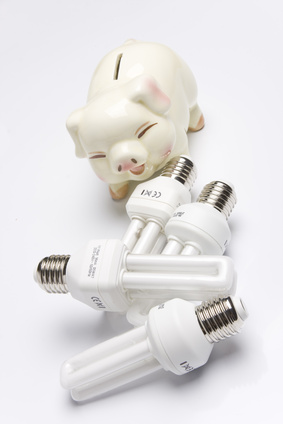
One expense that everyone (who owns a home) has is the expense of lighting.
You may not realize it, but roughly 25% of your electricity bill comes from your lighting.
If you take that amount of money and multiply it for 12 months (1 year), the number is outrageous.
This is why so many people are beginning to switch their old lights out for the new CFL and LED light bulbs.
These light bulbs will allow you to save anywhere from 1/25th to 1/3rd on your electricity bill.
People used to be hesitant about purchasing LED lights because of how expensive they were.
However, over the past few years, they have become much more affordable and now they are a better value, in the long-run, than both the CFL and traditional light bulbs.
Below are a few of the benefits associated with LED lights.
Give Off Less Heat –
If you have ever stood close to a traditional light bulb that has been on for a while, you’ve likely taken care not to touch it because of how hot it was.
While you may not have thought about it – the heat given off by these light bulbs actually affects your home’s temperature, which affects your energy bill.
LED lights don’t produce nearly as much heat as the traditional light bulb. In fact, they produce about twenty (20) times less heat!
Last Longer –
Traditional light bulbs work by heating up filament in an oxygen-free environment.
Once the filament burns out, the light bulb dies. This is traditional light bulbs burn out on a regular basis – no matter how careful you are with them.
LED lights don’t have this problem because they don’t operate through filament. In fact, they can last up to ten times longer than a traditional light bulb can.
Better Value –
While LED lights may cost more when you purchase them at the store than traditional light bulbs do, they actually cost less in the long run.
How? LED lights don’t use nearly as much energy as traditional light bulbs do and they last longer than traditional bulbs, therefore, over time, you’ll have actually spent less money on the LED light than you did the traditional bulb.
Promotes a Better Environment –
Since LED lights don’t use mercury in the manufacturing process, they are naturally a more environmentally safe option than traditional light bulbs are.
However, this isn’t the only reason they are a better for the environment. They also last a lot longer than traditional light bulbs do, which means the amount of waste associated with them is less too.
Above are some of the benefits associated with LED lights. If you haven’t paid attention to these lights before because of the higher up-front cost, take a look at them next time and note the difference in wattage used as they work.
You’ll be surprised at just how much energy they will save you. You’ll also be surprised to find that these lights are available in a variety of styles and wattage sizes too.
Passive Solar Winds and You
Perhaps you’ve heard about passive solar winds and how they can help people save money and energy over time?
It’s true that passive solar winds are a good option for building green energy as they help lock in the cool air in the summer and heat in the winter.
However, passive solar wind energy is created by maximizing the sun’s rays, which means that people living in different climates will need to install their windows differently in order for the method to work effectively.
For those who live in hot and sunny climates, their windows should be glazed and installed at the south of the house.
Why? The windows will absorb the sun’s rays when it low, meaning that the house won’t get overheated by collecting the heat during the peak hours of the day.
Additionally, those in warm and sunny climates can also install shields to help their homes not overheat during the summer months.
While you can install other windows in your house, you need to be careful and use glazed windows in shaded areas to keep your home cool.
People who live in colder climates, will need to use one of two strategies for keeping their homes warm.
You can either use a trombe wall, which is generally painted black (and big) so that it can absorb the sun’s heat without leaking out of your house.
The benefit of using a trombe wall over glass is that it doesn’t allow heated air to escape like glass windows have been known to do.
Now, the greenhouse methodology is similar to a greenhouse as you will use many windows to allow the heat of the sun’s rays into your home.
Then, a controlled timer will circulate the air throughout the house so that it maximizes the available heat instead of allowing it to leak out through the glass windows.
So, do you think taking advantage of passive solar winds are for you? The good news is that they work for homes in both cold and hot climates.
However, in order to determine if your home is a good candidate for them, you will need to speak with a local environmental contractor first.
Also, don’t just take the word of one contractor, take the time to meet with several specialists so you are able to make an informed decision.
The Do-It-Yourself Guide to Solar Panels
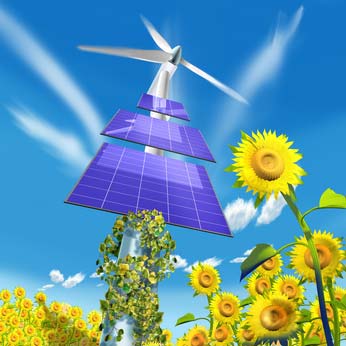
A lot of people have found that building their own solar panels have saved them a lot of money over the years.
If you have considered doing this, then you need to have a plan before you get started.
First, you need to have some money set aside for the initial costs of the project. Usually three or four hundred dollars will suffice.
The next thing you need to do is purchase the solar cells.
The cheapest way to do this is to buy them directly from a wholesaler since you need to purchase them in a group.
While this is the most cost-efficient method, it is also the most challenging to organize but it can be done.
Check the online sellers listed on sites such as eBay.
Once you have purchased the solar cells, you’re ready to construct the solar panels.
The materials you will need for this process include a wooden container, strippers, wire cutters and soldering equipment. Take the cells and wire them together to create the panel.
You may want to consider adding a diode to the panel to ensure the energy doesn’t go back to the panel from the batter when the sunlight is hitting it.
The type of energy you need to run the electronics in your home is AC (alternating current), but the type of energy stored from solar panels is DC (direct current).
Therefore,
purchasing an inverter will be necessary. This tends to be the most expensive part of converting your home to solar power. And an inverter (a big one) is essential if you are to stay on the grid and feedback your excess solar power to your utility company for credits on your bill.
Another thing you need to consider is that you will need a battery to store the energy generated in if you aren’t planning on using it immediately.
You can find both inverters and batteries on eBay for reasonable prices.
Finally, the last thing you need to do before you can actually use your solar panel is to pass inspections with it.
The
reason this is necessary is because you have to pass inspections in order to qualify for the financial incentives associated with the solar
panels.
Additionally, you will not be allowed to wire your solar panel to the grid if you haven’t passed an inspection.
This is important because once you’re given permission to wire the panel to the grid, you can actually “sell” the energy you generate!
Used and Discounted Solar Panels: Tips for Buying Them
Are you interested in reducing your energy costs through the use of solar panels, but don’t have the money to purchase them brand new? It is possible to purchase them used or at discounted prices.
Actually, it’s the smart thing to do because if you purchase solar panels new, you won’t begin to make money with them until after you’ve been using them for roughly twenty years due to how expensive they are at the time of purchase.
Below are a few tips to help you find solar panels at discounted/used rates.
1. Get to Know Realtors in High-Net worth Areas –
One of the best ways to save money on solar panels is to purchase a home that already has them. If you are interested in moving, this may be a good option.
However, even if you aren’t, it is still beneficial to talk to realtors in the area.
Some homeowners trying to sell their homes may be willing to sell the solar panels separately because many buyers don’t like the look of solar panels.
If you can find such a seller, than you will likely be able to get the solar panels for a good discount.
2. Search for Old Models –
You can also purchase solar panels at a discount from manufacturers/distributors if you are willing to use old models.
Most of the time, when new models of solar panels become available, manufacturers/distributors will discount the old models to make room for the new, more expensive models.
This is a benefit to you if you catch them at the right time!
3. Discount Buying Groups –
You’ll save a lot more money on solar panels when you buy them in bulk.
However, in order to do this, you need to find others who are interested in solar panels and team up.
You can then go to the manufacturer and purchase ten to twenty sets instead of one or two sets at a much lower price, which will have everyone in the discount buying group happy!
4. Test the Panels –
One thing that you need to be careful of when purchasing used/discounted solar panels is damages. Make sure you have a trained professional come out and inspect/test the panels before you pay for them.
Also, look for damages along the back of the panels as well as the front. Damages to the pack of the panels are often more serious than those on the front of the panels.
Finally, if offered, strongly consider purchasing a warranty for the solar panels.
It is straightforward to fit DIY solar power for homes, and I have published a book you can find below here, that details everything you need to know.
So even if you don't intent to instal DIY solar power you will be able to fully understand the process and be better informed when you speak to the contractors and sales people, about what your home requires and what the process should be.
Solar Heating - Using the hot air from your roof
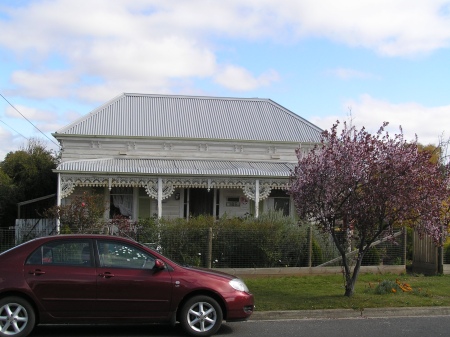
One of the best ways to go green at home is to install a solar heating system that circulates the hot air from your roof into the rooms of your house.
I have found this to be the absolute best way to save on my gas central heating bills in Spring and Autumn.
Those are the times of the year when the house feels too cool for comfort, but the sun is still shining enough to heat the attic air.
The thermometer setting cut in automatically when the temperature in the roof is 5 degrees warmer than the temperature in the room with the thermometer.
Even though my house has a strange U shaped series of sections to the roof, this system works well.
The roof over the kitchen and bathroom has no 'attic' space above the ceiling, so it was not possible to run the hoses with hot air to those rooms.
So this system only works if you have plenty of attic space to heat the air in and room to run the huge hoses into each room ceiling.
The other benefit of this system is that in Summer as soon as the evening air becomes cool, I switch the external flue system on and the house has cool fresh night air pumped into all the rooms instead of gas cooled AC air.
My system has 4 outlets and only cost $2,500 to buy and have installed.
I have been saving up to $300 every 60 days in Spring/Autumn heating costs from this system. I love it!!!
What You Need to Know about Energy-Efficient Doors
Choosing to purchase and install an energy-efficient door has several benefits such as reducing your current energy bill and keeping the temperature comfortable without adjusting the thermostat.
And, the great thing is that this is a project that can be done on most any budget. Below is the information you need to know about energy-efficient doors.
1. Type of Door –
You know you want an energy-efficient door, but that doesn’t answer the question of which type of door you should choose. Your choices are fiberglass, wood and steel.
In order to save the greatest amount of energy, you will need to choose a door that is well insulated. The best option for this is a steel door wrapped in wood.
The door will not only look great, but it will lower your energy costs, as well.
2. Weather stripping –
Weather stripping is actually more important than the door itself because it prevents air from escaping along the sides and beneath the door.
A good way to test your weathers tripping is to take a piece of paper and try to stick it in any gap/crack along the outside of the door frame.
If you can get the paper to go all the way through to the outside of your home, then you definitely have a problem.
Sealing these gaps is known as weather stripping. The process is very simple and inexpensive to do, and may even save you from buying a new door as this alone will make a huge difference in your home’s energy usage.
Home improvement stores such as Lowe’s and Home Depot have everything necessary for effective weather stripping.
You should also put a door snake or brush at the bottom of your door to keep drafts out.
3. The R Value –
If you have researched energy conservation very much, then you’ve probably heard a little about “R Value.”
Basically, R Value tells you how resistant the glass on your door is to heat. Many people have doors containing decorative glass on them because they look pretty.
The problem is that a lot of heat can be lost through the glass, if you aren’t careful. Therefore, if you choose a door with glass, that it has a good R Value before you buy it.
Make Sure Your Windows are Energy Efficient
There is a massive amount of heat/cooling loss through your home windows! Absolutely massive!
I had an energy consultant inspect my home and he really opened my eyes about what was needed to save energy around my huge windows and glass sliding doors (French Doors).
To stop the leak of energy at the top of your windows you should also install a Pelmet that encloses the top of your curtains and rails.
Very old fashioned, but apparently they were there for a reason other than design!
And I not only have curtains in front of my windows and doors, I have also fitted plastic bubble wrap that you can buy in rolls from packaging suppliers.
This does block the view from the window, but I don't mind because it now means that I can leave the curtains open and let the sunlight into the rooms.
Normally the curtains would be closed and I would be burning electric lights DAY and night in my home.
I also intend to fit a sheet of clear heavy duty plastic on the inside of my window frames so that I have some degree of all year round 'double glazing' and then I tack up the bubble wrap for the windows in the peak temperature extremes of Winter and Summer.
What You Need to Know About Energy-Efficient Roofs
Insulate your roof! You should have insulation in your ceilings, whether the fibreglass 'pink bat' type of sheets, or the cotton fibre type. It is also worth considering getting insulation fitted to your walls when you are building or refurbishing your home.
Ceiling insulation is one of the absolute fundamental ways to save energy and trap the air in the rooms at the temperatures that you want.
And if you are currently looking to build a house, or replace your roof, check out these ideas:
There are many ways that you can reduce your energy bills at home and installing an energy-efficient roof is one of them.
The good thing about replacing your roof is something that will have to be done at some point in time as no roof lasts forever.
If your roof is getting to this point, then consider the information below regarding energy-efficient roofs.
1. Incentives –
There are many incentives available for homeowners who replace their old roofs with energy-efficient roofs.
For example, you can receive a $200 rebate for every 1,000 sq. feet of roof you replace with an energy-efficient roof from PG&E.
Now, keep in mind that each state offers different incentives for energy-efficient roofs, so make sure you check with the state you live in.
You should even check with your utility providers to see if they offer any rebates too.
2. Types of Energy-Efficient Roofs –
Until they do some research, many people think there are only one or two options for energy-efficient roofs. However this true.
You have several different types of energy-efficient roof materials to choose from including metal, clay tiles and membranes.
Metal roofs are great because they help cool your home by reflecting the sun’s heated rays off of your home.
In addition, they are very durable in nature and don’t (generally) have to be replaced as often as shingles do.
Another popular option for energy-efficient roofs is clay tiles. The appeal of clay tiles is the fact that they are made in a sustainable manner, which helps the environment in many ways.
They aren’t nearly as reflective as metal roofs are, but there is a special coating that you can add to them that will help them reflect the sun.
The last option is membranes. Installing membranes isn’t that difficult and can be done on your own, however, the materials are much more expensive than the last two options.
Additionally, membranes aren’t very popular in residential homes and are generally used for commercial buildings instead.
3. Helpful Suggestions –
If you have decided that you want to purchase an energy-efficient roof than you should talk about it with several different contractors.
This will help you make an informed decision and get the best price. Don’t just settle for the first bid you get…get a minimum of three bids before hiring a contractor.
Keep in mind that you the bid should be for the entire job…not by the hour.
In addition to considering the bids, you should ask each contractor several questions to ensure that you choose one who is knowledgeable and has a good deal of experience.
It’s important that you trust the contractor who you’ve hired to do the job.
Having an energy-efficient roof installed is a great investment to make as it will add value to your home and save you money in heating and cooling costs, meaning you’ll get your money back over time with it.
However make sure you take your time deciding on the type of roof you want, as well as, the contractor you’ll use to install it.
So What Will You Do Next, Now That You Know How To Go Green At Home?

Now that you have finished reading this report you should have a better understanding of how affordable green energy is as well as the five different types of green energy.
You should also have some ideas on improvements that you can make to your home in order to make it greener as well as well as some tips on how you can reduce household waste and help the environment.
You also have more knowledge on solar panels, energy efficient doors and energy efficient roofs.
So what are you waiting for, isn’t it time to get out there and start making your home a greener place?
Resources you need to start going green
As I mentioned earlier, I have gone through the process of having solar panels fitted on my home to help me go green and save on electricity costs.
You can benefit from what I learned by getting this resource, which helped me to work out what I needed to learn about DIY solar power for homes.
* Are you tired of those high electric bills that you receive every month?
* Do you feel that too big a chunk of your earning is going toward the electricity bills - especially during the winter?
Well if the answer to these questions is a yes then we have the perfect solar power for homes solutions for you!
Get my exclusive training manual DIY Solar Power for Homes to learn about using and installing home solar power systems and residential solar power kits to power your house.
My guide has extra info about the requirements for Australian Solar Power systems.
Here are some going green products:
Here are some products to help you in things like saving money while going green.You can shop online, compare customer reviews, and get your order home delivered... saving you time and money!
Latest Tips for How To Do It Yourself: Going Green
Do you have a tip you want to contribute here? Share it!
Read the latest updates & how-to tips here:
Click the Title links below to see the latest how to do it tips and contributions to this page....
Green Shopping Tips When Buying A New Car
You’re in the market for a new car, and you want to be greener and more sustainable with your choice than you were in the past. First, you realize saving …
Things To Avoid For Eco-Friendly Shoppers
Shopping in an eco-friendly way can help you lower your carbon footprint and put more money in your pocket. When you learn to shop mindfully and thoughtfully …
The Importance Of Planning Your Shopping Trips
If you really want to reduce your negative effects on the environment, it’s important that you plan all your shopping trips. When you plan shopping trips, …
What Is Meant By Green Shopping?
If you want to be a green shopper, you should consider a few things. Essentially a green shopper is someone who considers the sustainability of everything …
Green Clothing Shopping Tips
For the most part, new clothing creates a huge burden on the environment due to the chemicals used to create the fabric and clean the fabric. Because of …
Green Shopping Tips for Buying Food
Everyone buys food, but did you know that there are ways you can ensure that your shopping trips add as little to your carbon footprint as possible? These …
Pros And Cons Of Buying Online
Buying online or offline is often a big question. Every day you’ll see a news story about how badly the warehouse pickers at Amazon are treated and how …
Where To Find Sustainable Products
The good news is that you can find sustainable products almost everywhere you normally shop. You don’t even have to try that hard. The consumer demand …
Energy-Efficient Roofs - Things to Consider
Energy-efficient roofs are a great way to reduce your carbon footprint, keep your home cool and save energy all at once. If your roof is getting to the …
Passive Solar Windows for Different Climates
Passive solar windows are a one-time investment that can help you save energy over a long period of time. During summer, it can help keep the heat out …
Making Green Energy Affordable: Steps towards the Future
Making green energy affordable and scalable is going to be one of the most important topics of the next century. Fossil fuels will run out - it's only …
Reducing Household Waste and Helping the Environment
Reducing household waste is everyone's responsibility. By reducing waste, you'll reduce your environmental impact, influence the people around you to do …
Things You Can Do To Go Green Today
Not everyone wants to help the environment but people who do think that in order to do so they have to drastically change their lifestyle or spend a lot …
WHAT ARE THE ADVANTAGES OF GOING GREEN?
There are many reasons for going green but the two most obvious are Environmental and economical.
You don’t have to be a dyed in the wool greenie to …
GOING GREEN IN THE HOME AND WHAT CHANGES TO MAKE
Saving power and water in the home can be achieved in many ways. The basic forms of power are Electricity and Gas and by reducing consumption of power …
Going Green: Tips for Reducing Energy Consumption
When it comes to green living, reducing the amount of energy you use is one of the easiest and most effective things you can do. While electricity itself …
Home Energy Savings for Less
A typical American home would spend almost $2000 a year on electric bills alone. That would equate to more than $160 a month. But did you know that a large …
Going Green Self Help tips
These days, you really do feel how erratic the weather patterns can be. Scientists refer to this phenomenon as global warming.
This simply means that …
Easing into the Living Green Lifestyle
Over the years many of us have become more aware, and more alarmed about the damage to the environment due to global warming and the pollution we create …
5 Ways To Make Your Home More Energy Efficient
No matter where we get our energy from, it isn’t free, which means thinking about being more energy efficient is good for the environment and our wallets. …
How to set up Recycling Center in your Home
One of the most important things we can do to reduce the buildup of waste in the environment is to recycle what we can.
Recycled items are used to …
How to Clean the Air in your Home
Since at the moment I am suffering from horrible hay fever which is triggered by having too much pollen and dust in the air, this is a timely topic for …
Teaching your Children to be Environmentally Conscious
Children are not too young to learn about saving the planet. You can teach them how to be careful of the environment and how their actions have a direct …
How to Reduce Household Waste
Each year, landfills get overloaded with billions of pounds of waste. Eventually, we’ll be asking where we will put it all. You can do your part to reduce …
Tips to Make your Home Environmentally Friendly
How does your home operate? Are you wasting resources and/or missing chances to save on your utilities and leave the Earth a healthier place than when …

"Power Tips" magazine is back!
You Get A Free Complete Self Help Report delivered to your email box every edition, plus you get a free PLR article and other great gifts!
SUBSCRIBE BELOW ... I promise you will want to USE what you learn!
I really want to know what you think of this site, this page, and to hear your tips or suggestions about it.
So please share your story or simply add a Comment in the comment box.
If you feel that the information on this page has been useful to you please give it a Like or share it with your friends - thanks!!
"You are a life Saver!!
I recently discovered this site and I can tell you that my life has not been the same. I now come here EVERYDAY and spend at least 1 hour.
I used to spend that time browsing online fashion and beauty
magazine which just means that I spend more. Now I have replaced that
habit with coming here.
In future I will think about contributing articles as well. Thank you! Thank you!! Thank you!!! and God bless"
Contact Us | About Us | Terms of Use | Privacy Policy | FAQ | Testimonials
Amazon and the Amazon logo are trademarks of Amazon.com, Inc. or its affiliates. As an Amazon Associate I earn from qualifying purchases. Product prices and availability are accurate as of the date/time
indicated and are subject to change. Any price and availability
information displayed on [relevant Amazon Site(s), as applicable] at the
time of purchase will apply to the purchase of this product.
Back to HOME PAGE of this how to go green at home guide page
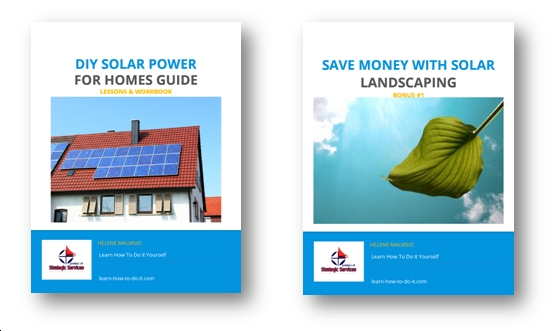







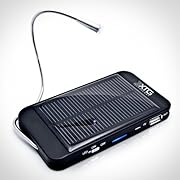
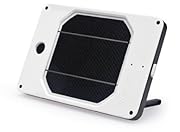
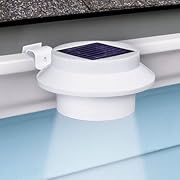
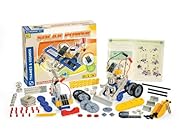
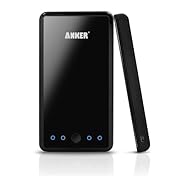


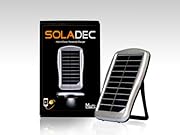









New! Comments
Have your say about what you just read! Leave me a comment in the box below.